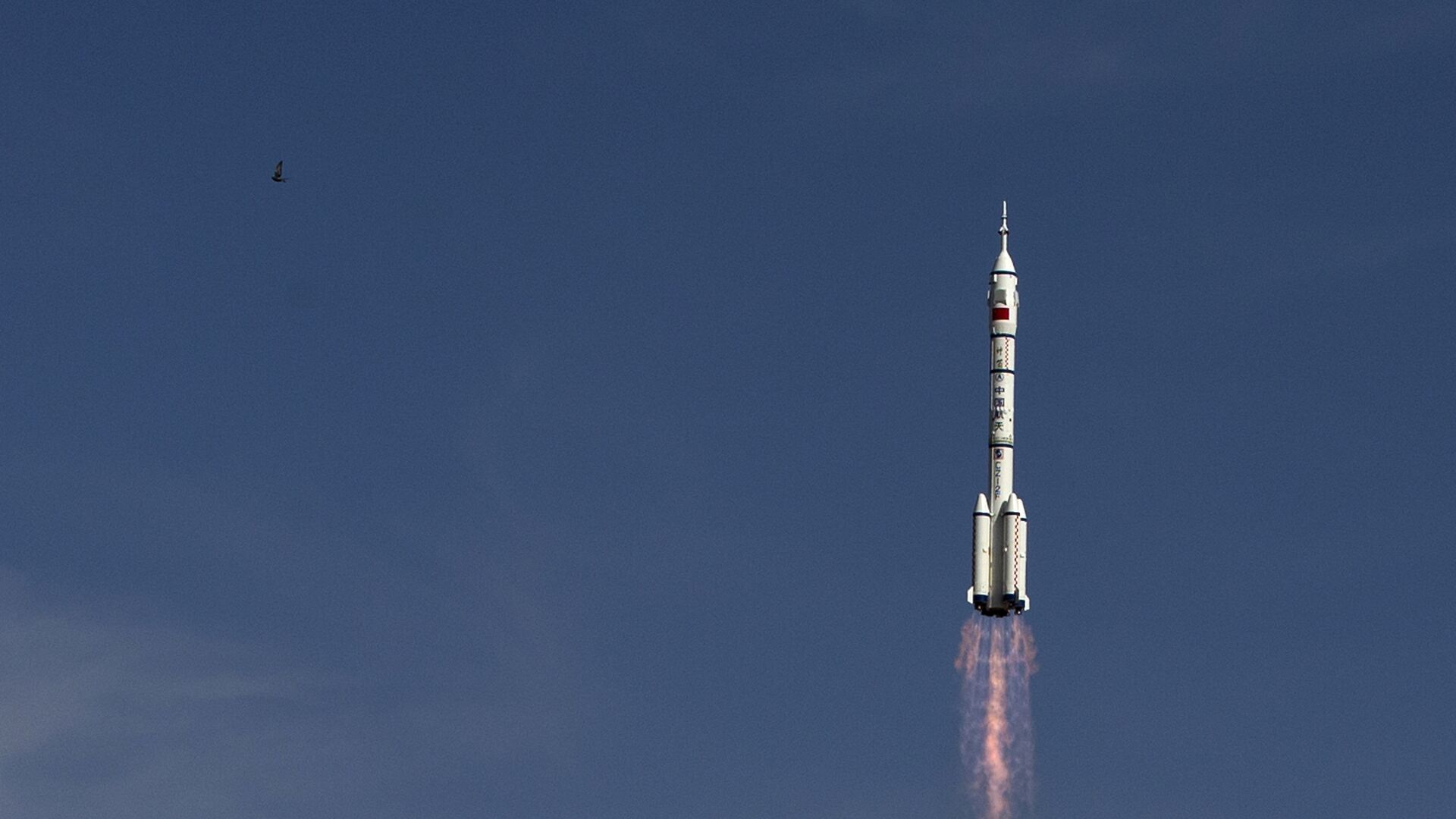China Launches Shenzhou 15 Manned Spacecraft
16:01 GMT 29.11.2022 (Updated: 17:59 GMT 29.11.2022)

© AP Photo / Andy Wong
Subscribe
BEIJING (Sputnik) - China launched Shenzhou 15 manned spacecraft on Tuesday from the Jiuquan Cosmodrome in northwestern Gansu Province, it will take a crew of three to the Tiangong Orbital Station, the launch is broadcast by China Central Television.
The Long March 2F launch vehicle was launched as scheduled at 23:08 Beijing time (15:08 GMT).
The crew included three taikonauts: crew commander Fei Junlong, Deng Qingming, and Zhang Lu.
The amazing moments. #Shenzhou15 pic.twitter.com/WJml0mCA6n
— Hua Chunying 华春莹 (@SpokespersonCHN) November 29, 2022
During the Shenzhou-15 mission, the last construction stage of the Chinese orbital station will be completed, and the stage of its use and development will officially begin.
After the arrival of the manned spacecraft at the station, its first orbital rotation of crews will take place, during which the Shenzhou-14 crew will go to Earth after a six-month mission, and the Shenzhou-15 crew will remain working at the station until May.
Construction of the Tiangong space station officially began in April 2021. The basic structure of the T-shaped station consists of the Tianhe core module and two laboratory modules - Wentian and Mengtian - docked to it. The station can host up to six people at the same time during a crew rotation change. The operational life of the station is 15 years and should end in 2038.
After the arrival of the manned spacecraft at the station, its first orbital rotation of crews will take place, during which the Shenzhou-14 crew will go to Earth after a six-month mission, and the Shenzhou-15 crew will remain working at the station until May.
Construction of the Tiangong space station officially began in April 2021. The basic structure of the T-shaped station consists of the Tianhe core module and two laboratory modules - Wentian and Mengtian - docked to it. The station can host up to six people at the same time during a crew rotation change. The operational life of the station is 15 years and should end in 2038.

